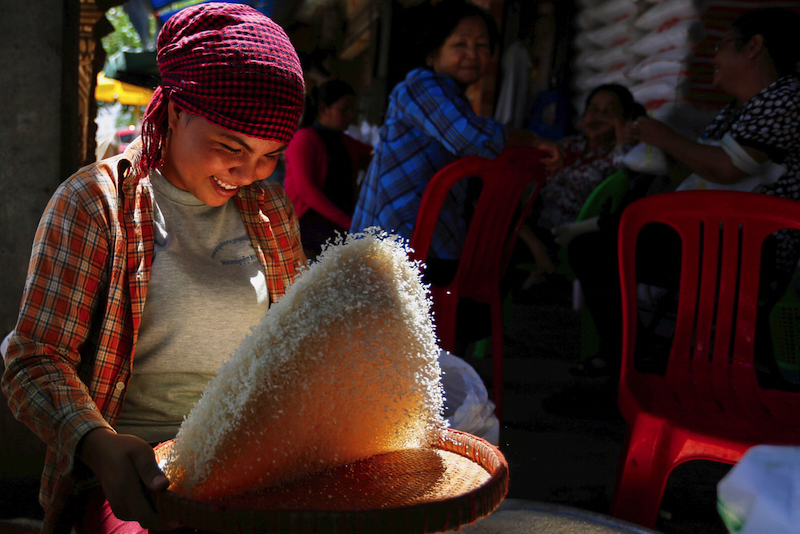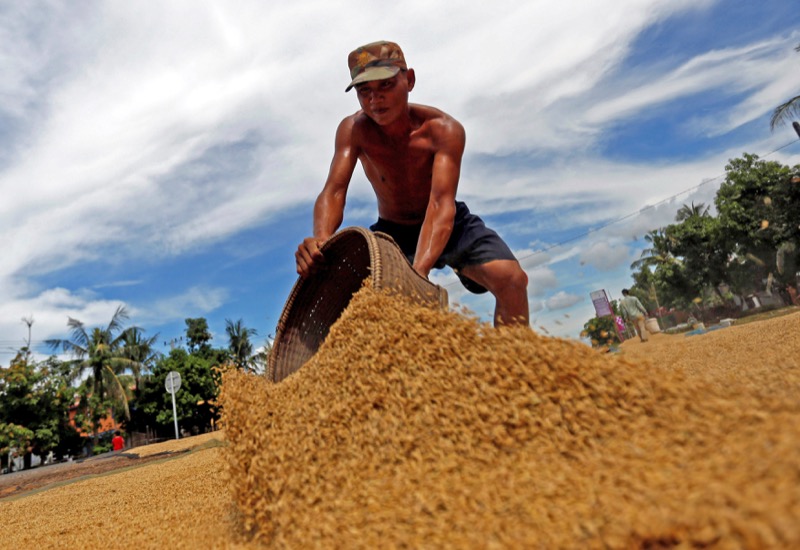In a major deal that could boost Cambodia’s total rice exports by nearly 50 percent this year, local and Bangladeshi officials signed a deal aiming to move 1 million tons of rice over five years, the countries’ representatives announced on Wednesday.
Looking to shore up its reserves of rice and dampen down prices following flash floods that devastated rice production, Bangladesh has been turning to neighbors in South and Southeast Asia to buy hundreds of thousands of tons of rice at a time.

Reuters reported in May that the government was looking to immediately import up to 300,000 tons of rice from Vietnam as part of the initiative.
In the latest deal, the Bangladeshi government will seek to buy 250,000 tons of rice from Cambodia this year, said Commerce Minister Pan Sorasak during the signing of the memorandum of understanding on Wednesday. The purchase alone would nearly match the 288,562 tons of rice Cambodia exported in the first six months of the year, according to statistics from the Agriculture Ministry.
And it would go a long way toward helping Cambodia approach its long-promised—but repeatedly missed—goal of hitting 1 million tons of milled rice exports a year, as well as lift its struggling rice farmers, who blocked roads in protest amid a rice price crisis late last year.
The sector has seen some stagnation in recent years, with the country exporting 542,144 tons last year, just 0.7 percent more than in 2015.
Sok Puthyvuth, head of the Cambodia Rice Federation, said the signing on Wednesday was only the first step in the process, and private companies would discuss prices in the coming months. The trade process itself may prove challenging, Mr. Puthyvuth said, because Sihanoukville Port is not yet capable of handling the shipment sizes the deal could demand. “This year we expect the port might be too small to enable the export, but we anticipate that next year the problem will be improved as the port will be expanded,” he said.

The Transport Ministry has released plans to build a second port in Preah Sihanouk province to handle rising shipping traffic, funded partially by a $200 million loan from the Japanese government. Once private rice companies have established prices, Chan Sokty, CEO of state-owned food stock firm Green Trade Company, will oversee the deal’s logistics. To address the capacity issues, Mr. Sokty suggested breaking the first order into smaller exports.
His company previously exported 20,000 ton shipments of cassava, so Mr. Sokty said the federation might consider separating the shipment into similar sized portions.
“I think it isn’t much different, although to export rice might require more caution,” he said. “We won’t export 250,000 tons at a time. We could export a few over time within the deadline in the contract till meeting the full amount.”
Mr. Sorasak, the commerce minister, said that although the new deal was smaller than Cambodia’s annual 300,000-ton rice export deal with China, the new trade route could open up future opportunities with the country of 163 million people.
“After this trade deal, we can learn from the experience and see how to develop other trade of agricultural goods as well,” he said.



